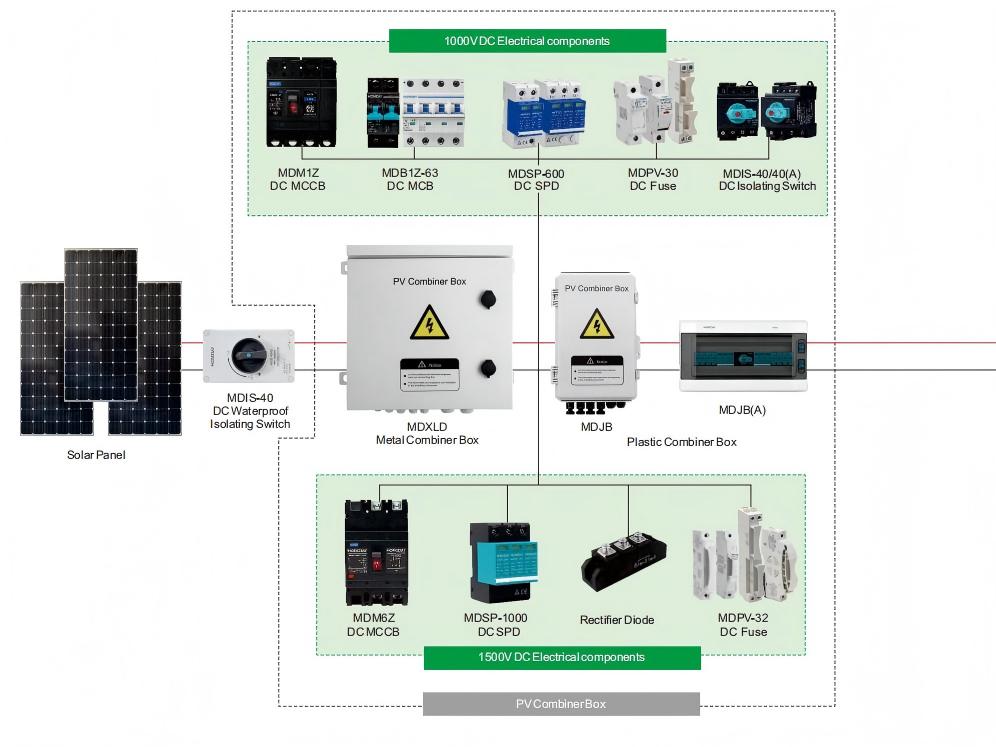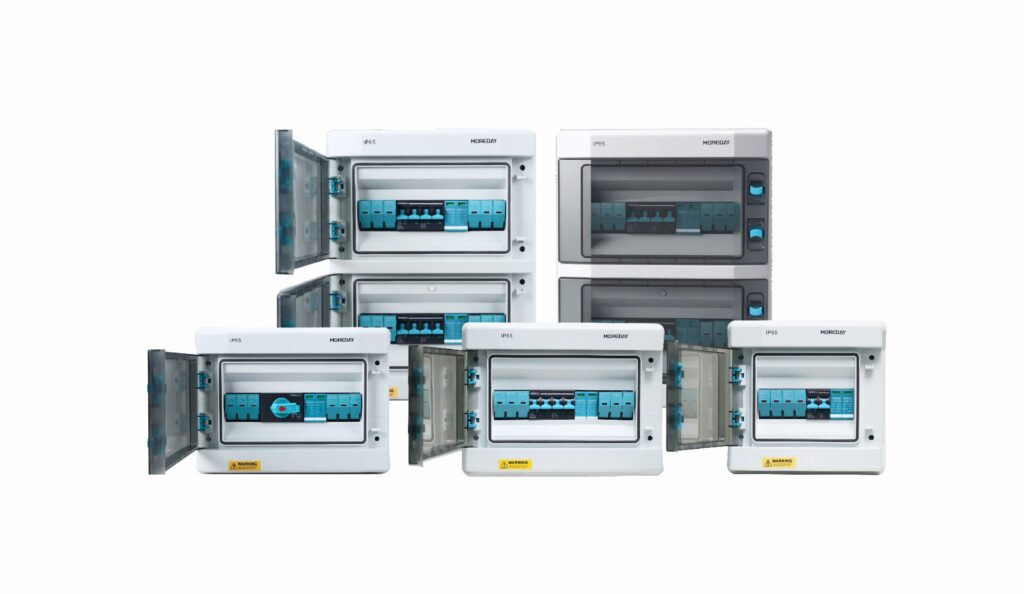PV combiner box is a crucial component used to simplify wiring connections and ensure safety when managing multiple PV strings simultaneously. It collects the energy produced by multiple PV strings and delivers it to the inverter. It is also equipped with circuit breakers, disconnect switches, fuses, and surge protectors to ensure the safety of the PV system.
Depending on the region and usage, it may be called by different names, such as PV combiner box, DC combiner box, or solar combiner box. These are common names, and they provide overcurrent, overvoltage, and surge protection to ensure the stable operation of the PV system, depending on the specific needs.
This article will introduce you to what a PV combiner box is, its working principle, common model configurations, and usage methods.
Table of Contents
ToggleWhat is a PV combiner box?
PV combiner box is an electrical device in a solar energy system that protects upstream and downstream electrical products and connects or branches circuits. It is also sometimes called a PV distribution box or a DC distribution box. It’s similar to adding circuit breakers, over/under voltage protectors, copper busbars, temperature sensors, fault alarms, DC disconnect switches, surge protectors, etc., to a distribution box. It effectively protects the electrical safety of single or multiple solar string systems.
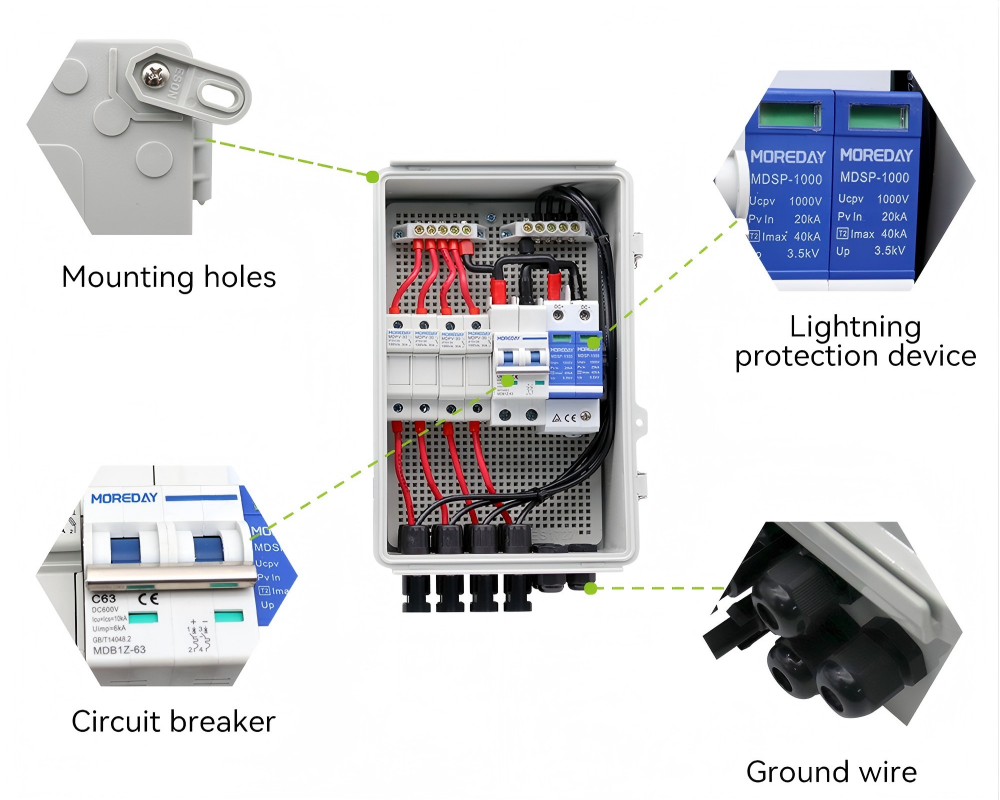
Functions of PV combiner boxes
The main functions of a photovoltaic combiner box are current collection and protection. Different configurations are used depending on the application:
- Combining: The most common configuration is combining multiple photovoltaic strings into a single output leading to an inverter.
- Splitting: This is used to branch circuits for multiple devices, where the output circuit requirements exceed the original string count.
- Protection: This configuration allows for simultaneous input and output, primarily to enhance protection against short circuits, overcurrent, over/undervoltage, reverse connection, grounding, detection, isolation, and surge protection, ensuring the safe and efficient operation of the entire photovoltaic system.
Simply put, it simplifies wiring and improves safety.
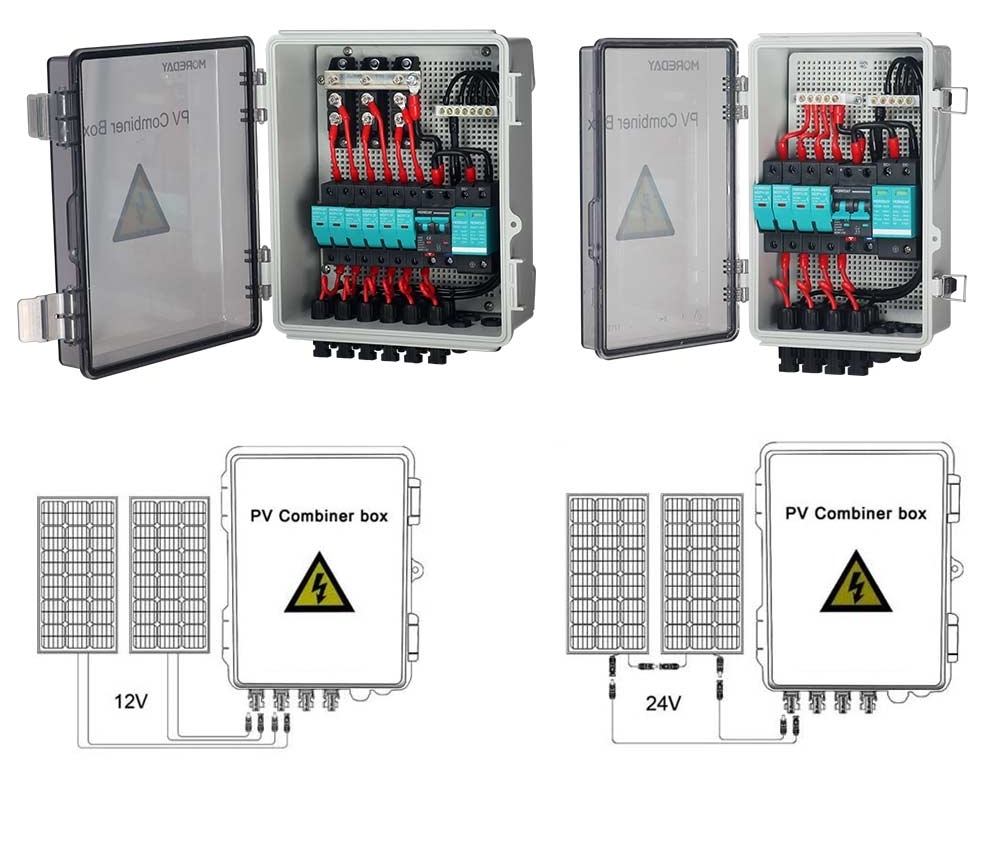
What is the working principle of a PV combiner box?
Multiple strings of solar panels are simultaneously input into a photovoltaic combiner box and then combined for output to the inverter.
Input: Connections are made via terminals, each typically connected to a fuse to prevent short circuits.
Protection: Fuses or circuit breakers disconnect faulty circuits in case of excessive current. Surge protection devices conduct high voltage caused by lightning strikes to the ground wire, preventing inverter damage.
Output: The total current from all strings is combined on the positive and negative buses, merging the power flow into a single output.
Grid Connection: The photovoltaic combiner box merges the currents and sends them to the inverter, which converts DC to AC for grid connection or use with household appliances.
Isolation Switch (Optional): Solar combiner boxes with specific requirements may also include a built-in DC isolation switch, which physically ensures safety by cutting off the current between the panels and the inverter.
Electrical protection mechanism of PV combiner box
A PV combiner box protects both upstream photovoltaic (PV) strings and downstream inverters.
Upstream Protection (PV Modules): When a PV string experiences a fault (e.g., short circuit, shading, or module damage), the fuse for that string blows, isolating it. This prevents backflow of current from other strings from damaging them or their connectors.
Downstream Protection (Inverter): Surge protectors and circuit breakers prevent overvoltages or reverse overcurrents from reaching the inverter. For example, during a lightning strike, a surge protector quickly diverts the surge current to the ground wire, preventing sensitive electronic components in the inverter from burning out.
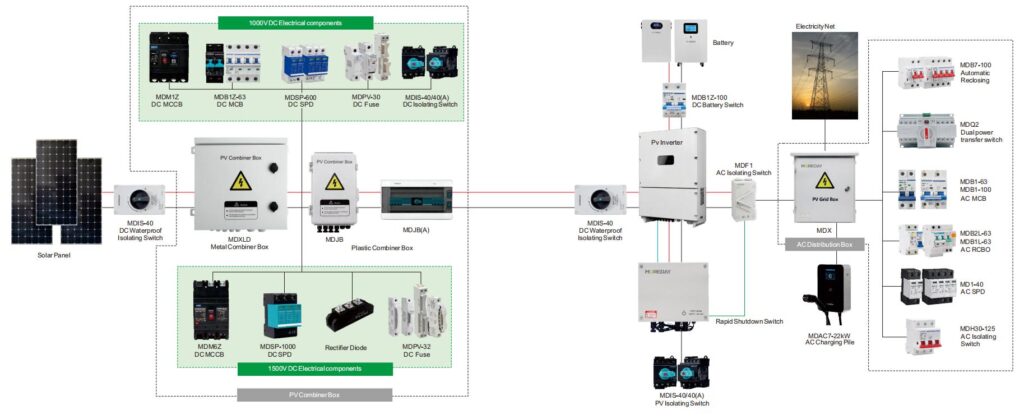
Common types of PV power combiners
Different types of photovoltaic (PV) combiner boxes are required for solar systems of varying sizes. Common types include:
Standard PV combiner boxes (4 inputs/1 output, 6 inputs/1 output, 2 inputs/2 outputs): Designed for small to medium-sized solar systems, often used in personal or residential settings. Each input has independent protection, and all lines are combined into a single output.
Smart PV combiner boxes: Equipped with a monitoring module, allowing remote monitoring of the combiner box, string current, voltage, and SPD status, improving equipment maintenance efficiency.
High-voltage DC combiner boxes: Used in large commercial and utility (1000V or higher) solar power plants. Typically equipped with industrial-grade protection and insulation panels for enhanced safety.
Custom combiner boxes: Configurable with fuses, circuit breakers, surge protectors, disconnect switches, terminal blocks, etc., to adapt to different inverters or environments.
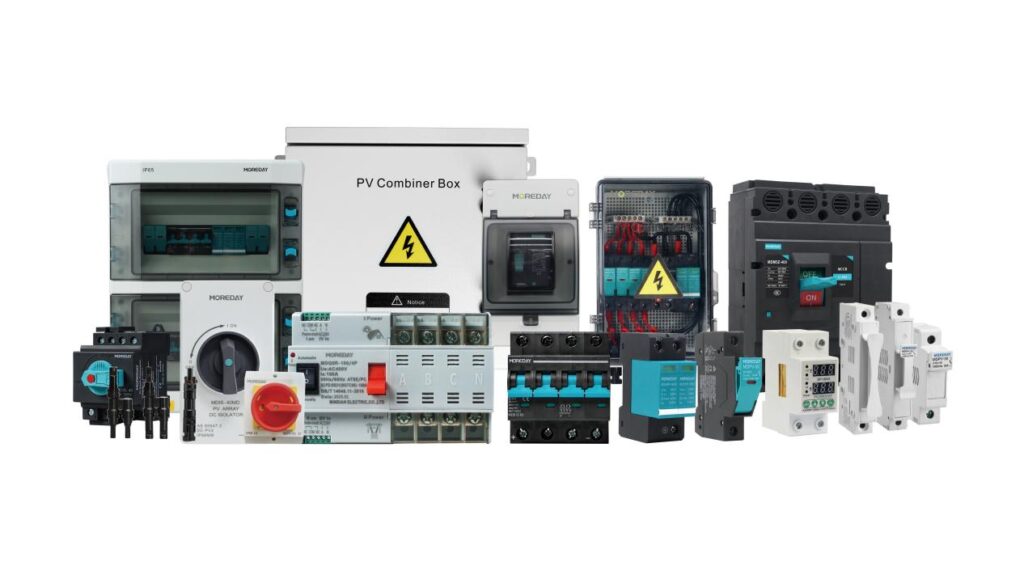
Application of PV combiner boxes
PV combiner boxes are a common feature in every solar power system. Here are some typical application examples:
Residential Solar Systems: For rooftop systems connecting multiple strings of solar panels, DC combiner boxes directly reduce circuitry and ensure safe wiring.
Commercial and Industrial Solar Systems: Larger buildings and factory systems require multiple combiner boxes to manage dozens of photovoltaic strings, providing efficient distribution and real-time protection.
Utility-Scale Solar Power Plants: High-voltage photovoltaic combiner boxes manage hundreds of photovoltaic strings, collecting a specified range of DC power before supplying electricity to large inverters.
Hybrid Energy Systems (PV + Energy Storage): Combiner boxes are seamlessly integrated into hybrid solar + energy storage systems, ensuring safe connection of photovoltaic modules, batteries, and inverters.
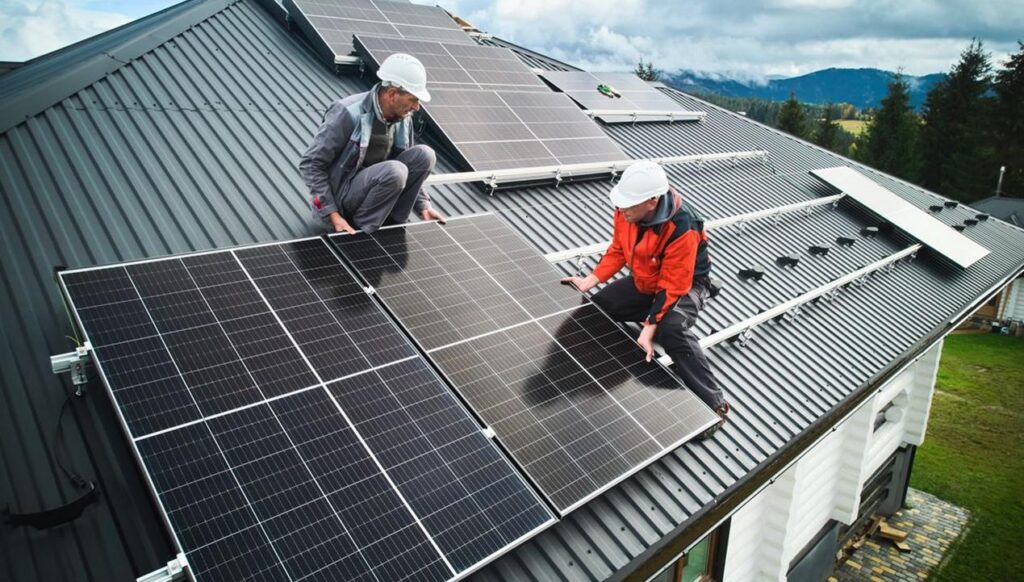
Conclusion
PV combiner boxes (also known as DC combiner boxes, solar combiner boxes, or photovoltaic combiner boxes) are an indispensable part of solar energy systems. They not only integrate multiple solar panel strings but also provide protection and monitoring functions, improving the safety and performance of the entire photovoltaic system while reducing maintenance costs.
From small residential solar systems to large-scale solar power plant projects, combiner boxes play a crucial role in safety, efficiency, and ease of maintenance.
MOREDAY offers certified PV combiner boxes (CE, CB, and TUV certified) in various configurations, including 2-in-2-out, 4-in-1-out, and 6-in-1-out, and is a reliable global supplier for solar systems and energy storage applications.
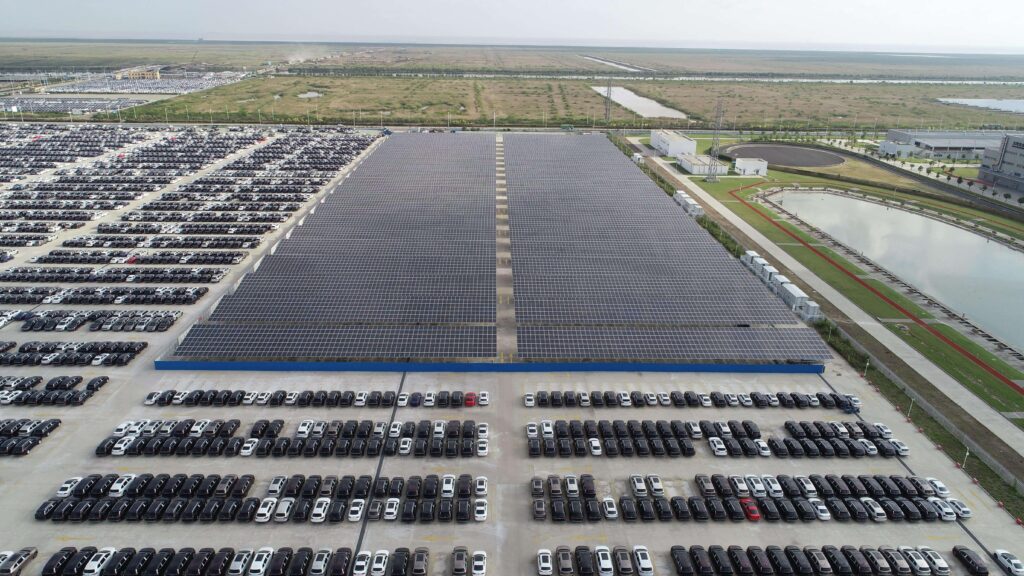
PV Combiner Box gathers the output from multiple solar strings into a single circuit, offering protection and efficient connection to the inverter.
Typically, it includes DC fuses, surge protectors, circuit breakers, isolators, and monitoring modules.
If a string short-circuits, the fuse for that branch will blow to isolate the fault, preventing backfeed from other strings and protecting the inverter.
Yes, many manufacturers like MOREDAY provide customized options — including waterproof enclosures, monitoring features, and different voltage/current configurations.
It should be mounted between the PV array and inverter, as close as possible to the solar panels, to minimize DC cable length and power loss.

